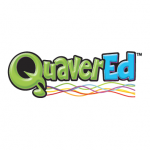QuaverMusic Helps Bridge the Gap!
By Kristin Clark Taylor
A Powerful Partnership
Mariana Anderson has been a music teacher for twenty years.
Over the course of those two decades, the eloquent educator says she’s witnessed a fundamental shift in the way teachers teach and students learn.
There are two factors in particular that have shaped (and reshaped) the nature of teaching and learning: The inevitable passage of time and the inevitable advancement of technology.
Anderson starts by reflecting on time.
“Over time, I’ve noticed it’s getting harder to get and keep students engaged,” says Anderson, who teaches at Spring Meadows Elementary in San Antonio, Texas.
And then there’s the technology explosion.
“Technology has become an important part of my students’ daily lives,” she says. “They’re comfortable with it, and they understand how to use it.”
This is one of the many reasons Anderson says she’s fortunate to have QuaverMusic in her classroom.
“Quaver is designed to create a connection between technology and learning,” she says. “It’s designed to bridge the gap and to bring music to life!”
She points to Quaver’s dynamic, interactive platform to make her point.
“When students can see the lyrics, when they can relate to the characters and the lessons on-screen, they learn differently.”
Anderson, a highly experienced educator, uses old-school techniques and hands-on learning to reach and teach her students, but she also uses Quaver’s songs and lessons to create an additional level of connection and engagement.
“I trust Quaver,” she says. “It provides a nice balance.”
The Texas teacher also uses Quaver to reinforce the lessons she teaches.
She explains how, after she’s introduced a new musical concept to her students, she’ll turn to Quaver’s colorful visuals and lively videos to reinforce the concept and solidify the lesson.
Or the other way around.
“After working on a Quaver lesson, I’ll often pull out the instruments to reinforce that lesson with hands-on learning,” she says.
This kind of flexibility, she says, is what makes learning fun.
But what she’s describing is far more than just fun.
What Anderson has created in her classroom is a powerful partnership between old-school, hands-on learning and cutting-edge, cloud-based technology.
The best of both possible worlds.
A Buffer for Behavioral Challenges
Anderson makes yet another keen observation.
When students aren’t adequately engaged, behavioral issues can arise.
“Students can lose interest quickly,” she says, “and when they do, minor conflicts can pop up.”
Her assessment is honest and forthright.
“They’ll listen to me for a certain amount of time,” she concedes, “but if there isn’t a visual connection or some kind of additional stimulation to hold their interest, their attention levels drop off.”
Anderson is obviously not undermining or minimizing her abilities as a teacher.
If anything, she is demonstrating that she understands how to fully engage her students in every conceivable way possible, using Quaver as an important tool to get the job done.
Anderson says she also places emphasis on physical movement in her classroom as an important form of creativity, growth, and self-expression.
“We all love the song Pizza-Pizza Daddy-O,” she says, “because it gets everybody up and moving!”

Anderson recalls a recent classroom scene when her students were jumping, spinning, and singing to “Pizza-Pizza.”
“A few were even doing the splits!” she adds with a smile in her voice.
She remembers one student saying he couldn’t do the splits, and how the other students kept encouraging him to just have fun and to keep moving.
“Next thing I knew,” Anderson recalls joyfully, “I looked up, and he was doing the splits!”
This is a perfect example of how one inspiring educator uses her amazing skills, with Quaver at her side, to engage her students, bolster their self-confidence, and bring music to life.
Without a doubt, Anderson’s most critical mission is to ensure the growth and development of her students, using music as the vehicle.
Step into her classroom — or listen to her speak — and two words will immediately come to mind:
Mission accomplished.
Want to accomplish this mission in your classroom? Go to QuaverEd.com/Music.
Kristin Clark Taylor is an author and an editor.
***
